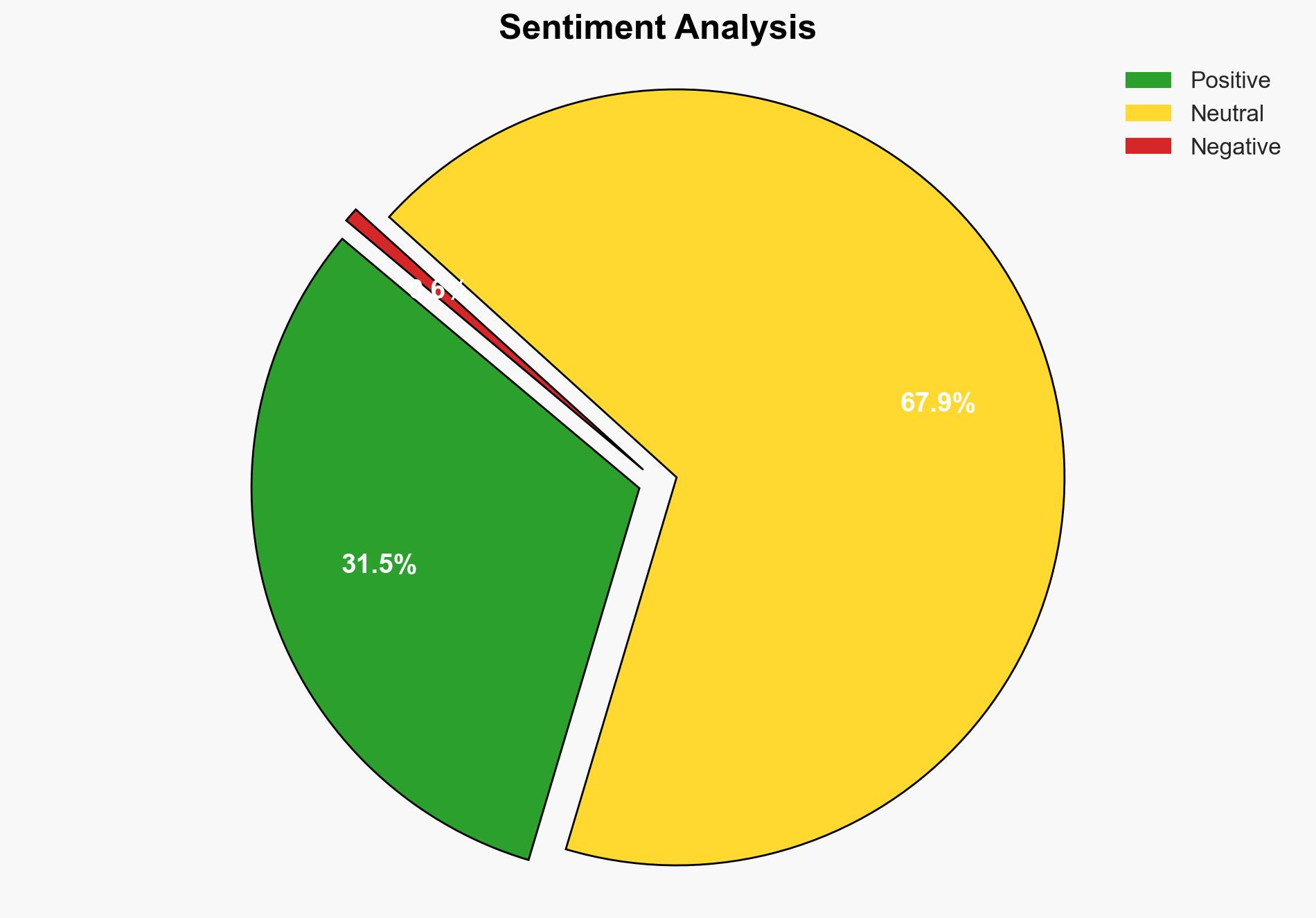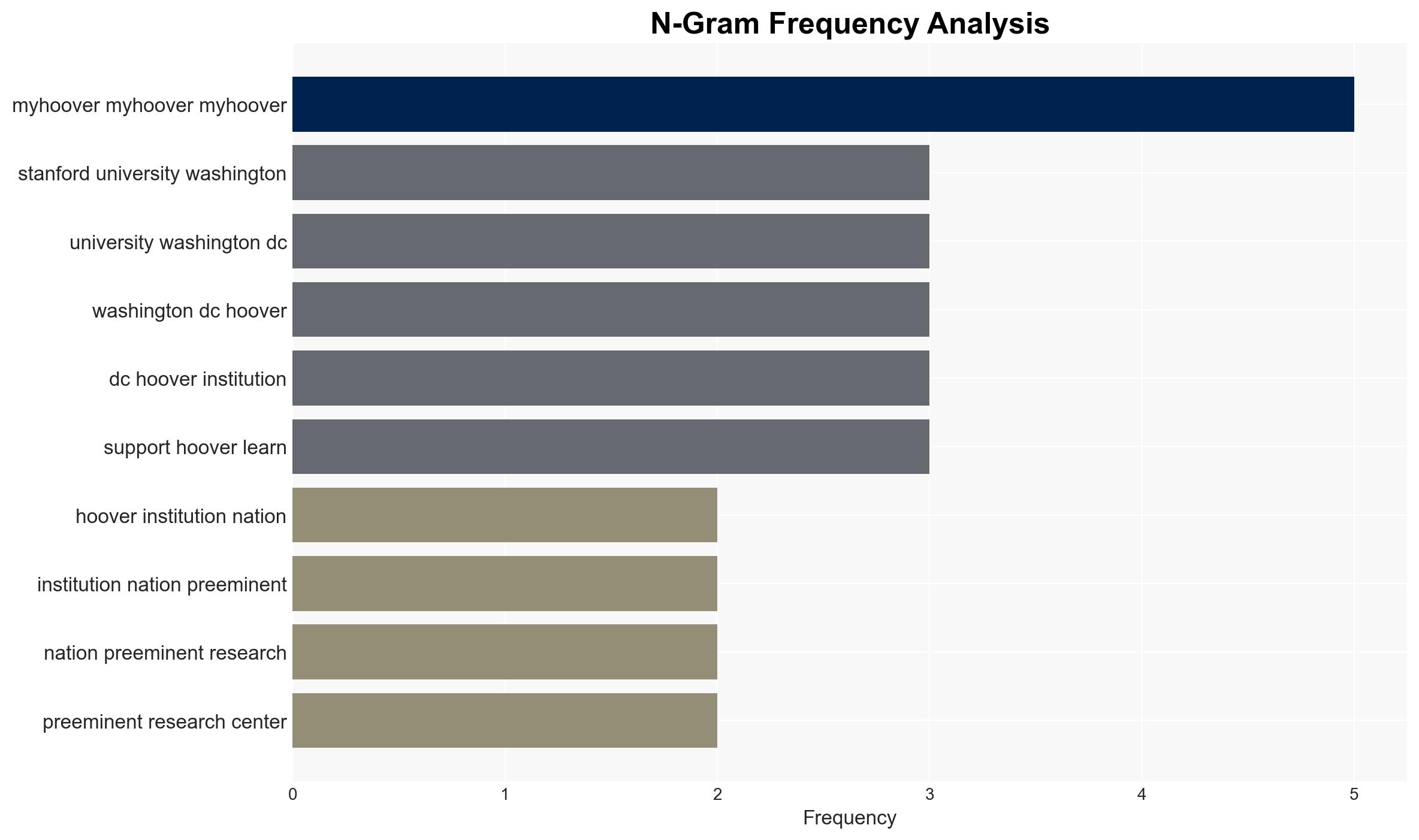US Tax Dollars Funded Chinese Lab Researching How to Dominate Rare Earth Trade – Hoover.org
Published on: 2025-11-16
AI-powered OSINT brief from verified open sources. Automated NLP signal extraction with human verification. See our Methodology and Why WorldWideWatchers.
Intelligence Report:
1. BLUF (Bottom Line Up Front)
The most supported hypothesis is that US tax dollars inadvertently funded Chinese research into dominating the rare earth trade due to insufficient oversight and transparency in grant allocations. This poses a moderate national security risk, as it could enhance China’s strategic advantage in a critical industry. Recommended actions include tightening oversight on research funding and increasing collaboration with allies to secure alternative rare earth sources.
2. Competing Hypotheses
Hypothesis 1: US tax dollars were knowingly used to fund Chinese research aimed at dominating the rare earth trade, reflecting a strategic oversight or policy failure.
Hypothesis 2: The funding was an inadvertent consequence of broader research collaborations, with insufficient checks on the end-use of funds, rather than a deliberate policy choice.
Hypothesis 2 is more likely due to the complexity and scale of international research collaborations, which can lead to unintended funding allocations without rigorous oversight mechanisms.
3. Key Assumptions and Red Flags
Assumptions: It is assumed that the funding mechanisms lack stringent checks on international collaborations. The hypothesis assumes no deliberate intent by US agencies to support Chinese strategic goals.
Red Flags: Potential bias in reporting sources that may exaggerate the extent of funding or its impact. Lack of transparency in grant allocation processes could indicate systemic issues.
Deception Indicators: Possible misinformation campaigns by adversarial entities to exploit the narrative for geopolitical advantage.
4. Implications and Strategic Risks
The primary risk is the enhancement of China’s dominance in the rare earth sector, which could lead to economic and strategic leverage over the US and its allies. This could escalate into political tensions and impact global supply chains. Cyber threats may increase as adversaries seek to exploit vulnerabilities in research networks.
5. Recommendations and Outlook
- Actionable Steps: Implement stricter oversight on research funding, particularly in sensitive sectors. Enhance collaboration with allies to diversify rare earth sources and reduce dependency on China.
- Best Scenario: Improved oversight prevents further inadvertent funding, and alternative supply chains are established, reducing strategic vulnerabilities.
- Worst Scenario: Continued funding of adversarial research leads to significant strategic disadvantages and economic dependency.
- Most-likely Scenario: Incremental improvements in oversight reduce but do not eliminate risks, necessitating ongoing vigilance and adaptation.
6. Key Individuals and Entities
No specific individuals are identified in the provided text. The Hoover Institution is mentioned as a key entity.
7. Thematic Tags
Structured Analytic Techniques Applied
- Cognitive Bias Stress Test: Expose and correct potential biases in assessments through red-teaming and structured challenge.
- Bayesian Scenario Modeling: Use probabilistic forecasting for conflict trajectories or escalation likelihood.
- Network Influence Mapping: Map relationships between state and non-state actors for impact estimation.
Explore more:
National Security Threats Briefs ·
Daily Summary ·
Support us
·





